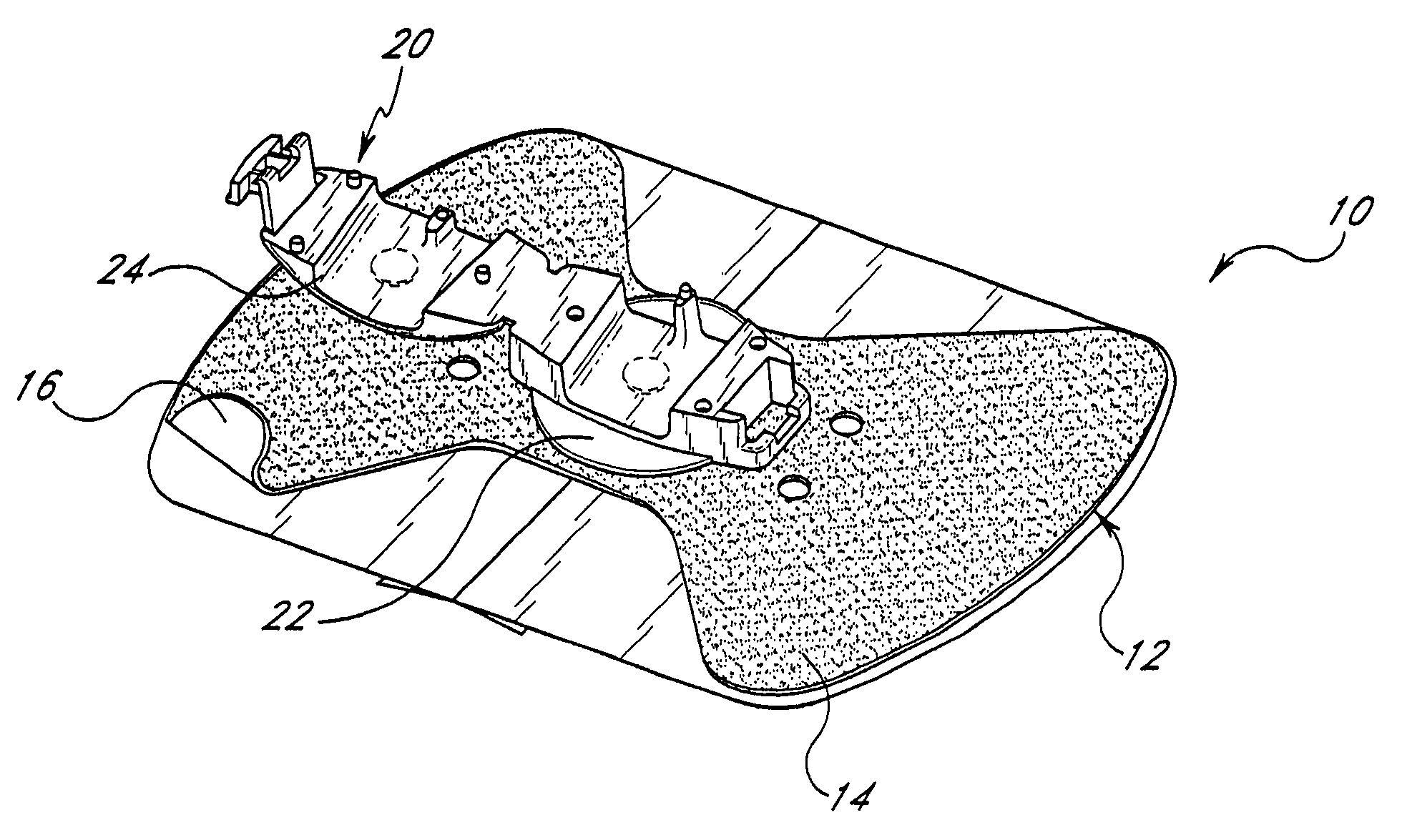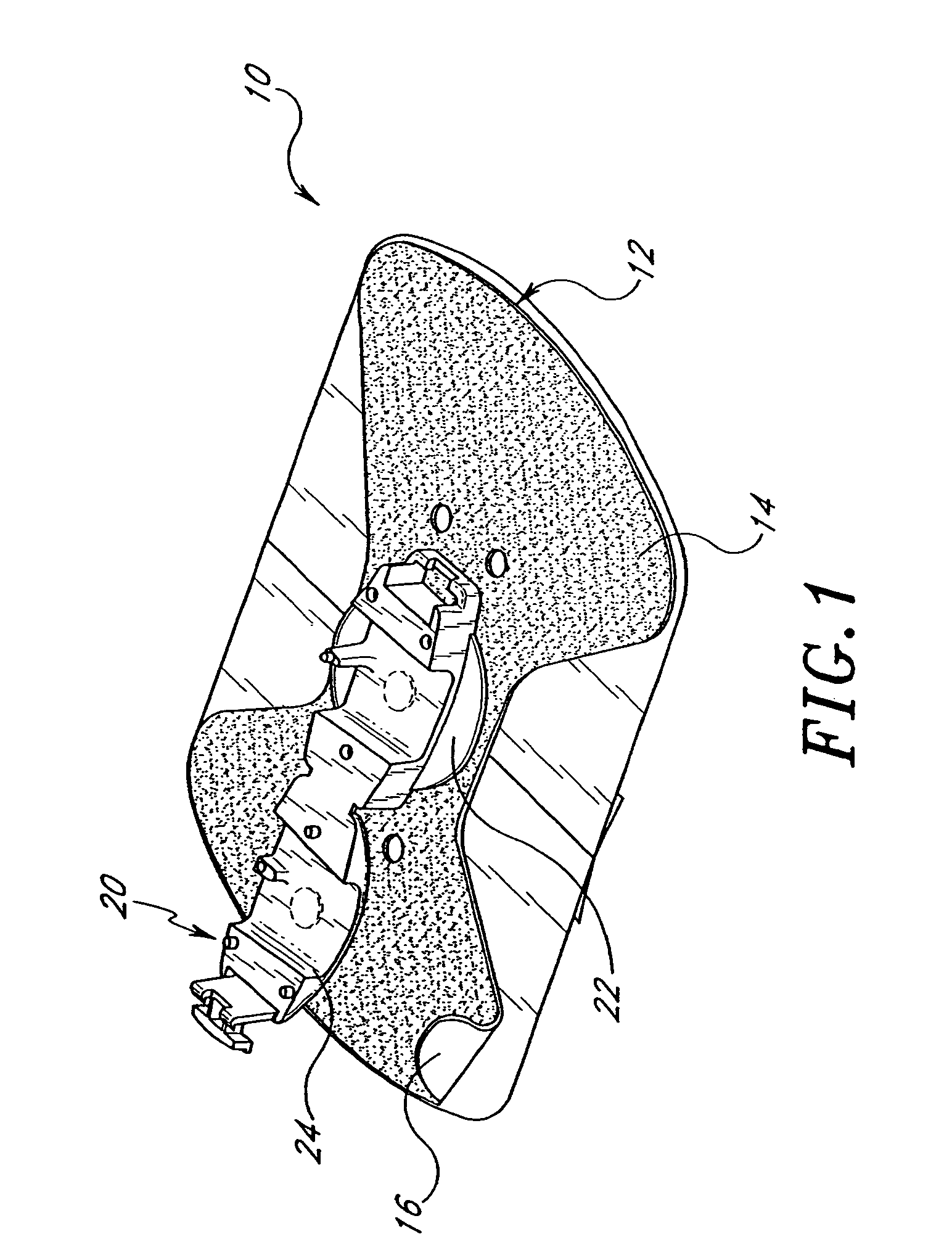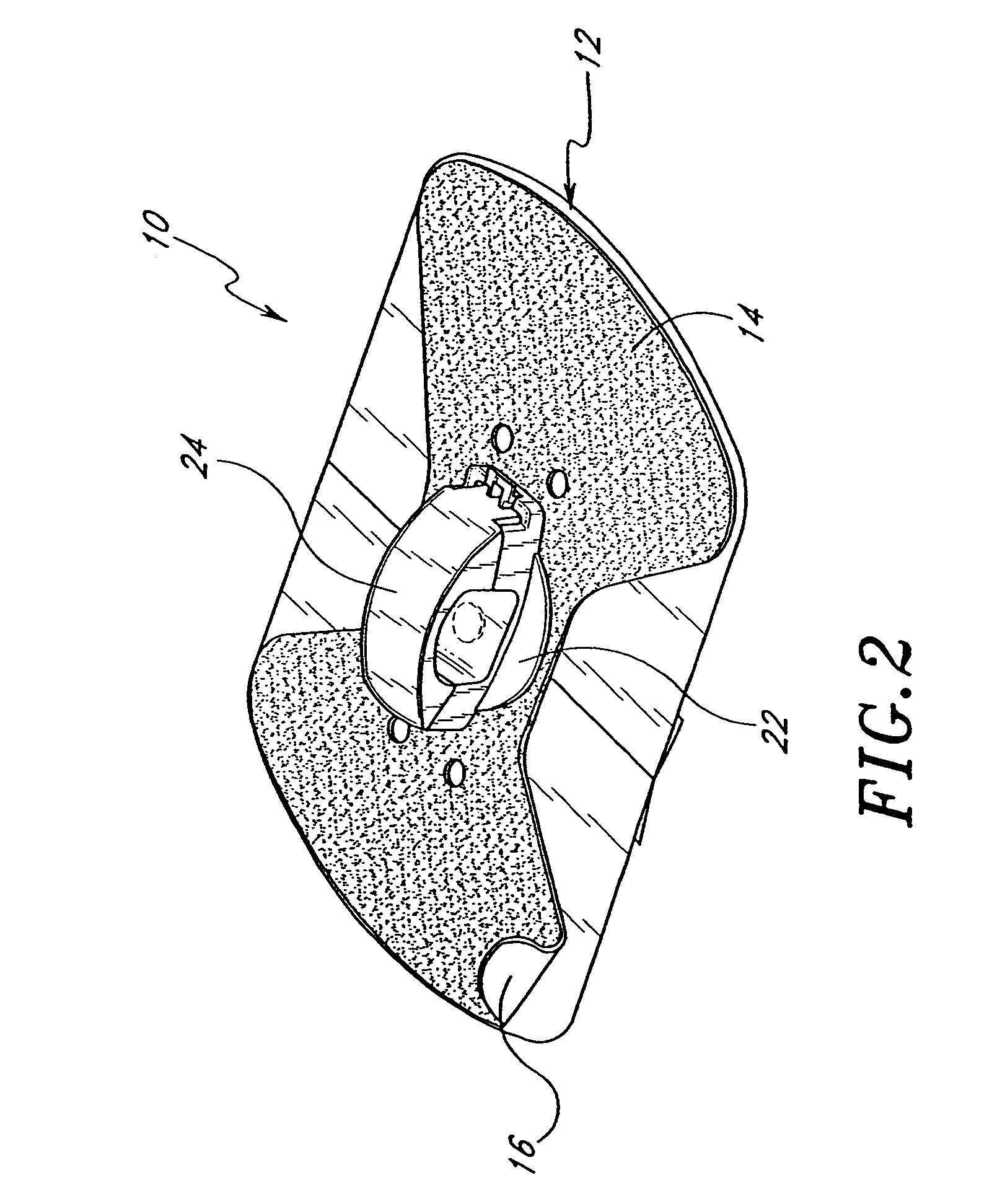Dialysis catheter anchoring system
- Summary
- Abstract
- Description
- Claims
- Application Information
AI Technical Summary
Benefits of technology
Problems solved by technology
Method used
Image
Examples
Embodiment Construction
[0038]The following description and examples illustrate a preferred embodiment of the present anchoring system in detail which is disclosed in the context of use with an exemplary dialysis catheter. The principles of the present invention, however, are not limited to dialysis catheters. It will be understood by those of skill in the art in view of the present disclosure that the anchoring system described can be used with other types of medical articles, including, but not limited to: other catheters, fluid delivery tubes, and electrical wires. One skilled in the art may also find additional applications for the devices and systems disclosed herein. Thus, the illustration and description of the anchoring system in connection with a dialysis catheter is merely exemplary of one possible application of the anchoring system.
[0039]To assist in the description of these components of the anchoring system (see FIG. 1), the following coordinate terms are used. A “longitudinal axis” is genera...
PUM
 Login to View More
Login to View More Abstract
Description
Claims
Application Information
 Login to View More
Login to View More - R&D
- Intellectual Property
- Life Sciences
- Materials
- Tech Scout
- Unparalleled Data Quality
- Higher Quality Content
- 60% Fewer Hallucinations
Browse by: Latest US Patents, China's latest patents, Technical Efficacy Thesaurus, Application Domain, Technology Topic, Popular Technical Reports.
© 2025 PatSnap. All rights reserved.Legal|Privacy policy|Modern Slavery Act Transparency Statement|Sitemap|About US| Contact US: help@patsnap.com



